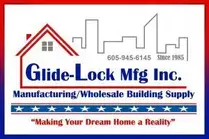If the sealant on your kitchen cabinets is peeling off, there are a few things you can do to fix the problem. You can start by ensuring that your cabinets are properly sealed. The sealant on your cabinets should be made of vinyl or pre-cat lacquer, which has been treated with a catalyst in the factory to make it more water-resistant.
The next step is to thoroughly clean your cabinets. This step is important as it will help remove built-up residue, grease, and dirt. It will also ensure that you get the best results. Next, you will need to clean and repair any damaged areas. If your new hardware doesn’t match the old holes, you must fix it using a high-quality filler.
You should also make sure you have the right tools for the job. A quality tool will make the job much easier and less time-consuming. Ensure that your tools are clean and dry before starting any work. This will help you avoid any problems that may arise. You should also prepare the surfaces you’ll be working on with all the necessary materials. This will make the project go a lot smoother.
If your kitchen cabinets have a lacquer finish, you can easily check whether their sealant is still intact. If the sealant has started peeling off, it means that the lacquer used on them wasn’t thick enough or the coats weren’t applied correctly. This means the cabinet maker used a substandard product. Those lacquers designed for kitchen and bathroom use are more likely to withstand moisture than ordinary lacquer.
Another way to fix the problem is to replace the cabinets. Laminate cabinets are the most affordable option but are prone to cracking and peeling. Although they can be refinished, you’ll need to buy new cabinets if the finish is peeling off. Otherwise, you can reinstall the laminate. To do this, you must remove the old adhesive and apply a new one.
The best kitchen cabinet sealant is polyurethane, which has a semi-shiny finish that protects the paint beneath without affecting the clear coat. High-gloss and medium-gloss finishes are also available. The most common recommendation is to add two coats of clear sealer to the cabinets, but some products may require three coats.
After applying the paint, you should check the wood. Look for any water damage, dents, or peeling paint. These can all indicate the need for rejuvenation. Also, you should clean the cabinets thoroughly to remove any dirt or grime. If there are scratches or dents, you can use putty to repair them. If you notice a deterioration in the paint, you can apply another coat of paint.
A clear coat can help protect your cabinets from damage caused by natural light and other factors. A clear coat also makes your cabinets brighter, protects them from fading, and provides a glossy finish. It also protects your cabinets from UV damage, which can degrade paint finishes.
